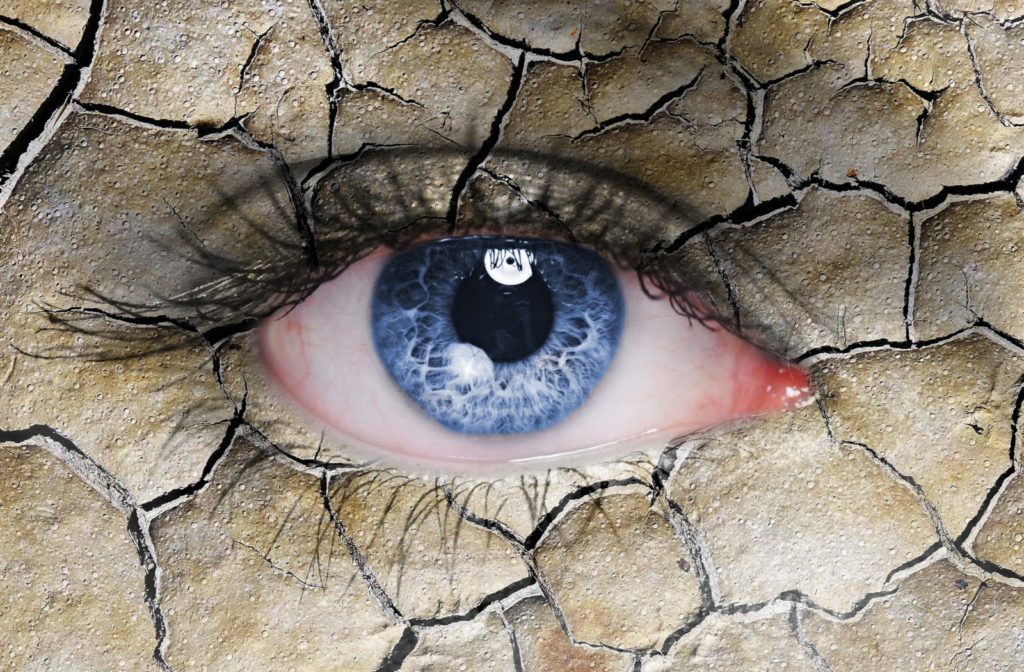What is Dry Eye?
If you’re experiencing dry, gritty eyes that feel itchy or overly watery – you may be a victim of chronic dry eye. However, you don’t need to fret. Dry eye is an irritating and uncomfortable condition, but there are many different treatments available to mitigate symptoms and keep your eyes comfortable.
In most cases, dry eye is caused by your eyes lacking good quality tears. Tears without the correct chemical composition can evaporate quickly or not lubricate the eye’s surface thoroughly, creating the discomfort associated with dry eye.

What Makes Good Quality Tears?
Tears are what keep your eyes feeling moist and lubricated every time you blink. The tear film spreads over the surface of your eye, keeping it smooth and clear.
The tear film is made up of 3 layers:
- The oily layer
- The watery layer
- The mucus layer
The oily layer is the outermost part of the tear film, keeping tears from evaporating too quickly.
The watery layer is the middle of the tear film, making up the bulk of what we see as tears. The watery layer flushes away bacteria and particles and keeps the eye clean.
The mucus layer is the term film’s innermost layer, helping the tears stick to the eye’s surface and keep it moist.
If one of the tear film’s layers is out of sync or not producing enough to create good quality tears, your eyes will begin to feel dry and uncomfortable.
Common Causes of Dry Eye
Dry eye can occur due to many different factors from the air quality around you to the natural side effects of aging. Typically, people will produce fewer tears as they get older from hormonal changes, including menopause.
Dry air can cause your eyes to feel dry. Depending on the dew point in the area you live in, dry outdoor air can cause your eyes to feel sapped of their moisture. Kansas has a dew point rank of 19, which means that the air throughout the state can feel notably dry.
Additionally, indoor air can affect your eyes’ moisture levels and exacerbate symptoms of dry eye. Air conditioning, fans, and space heaters can create a dry environment that evaporates your tears more quickly.
Other notable causes of dry eye include:
- Certain conditions such as rheumatoid arthritis and Sjogren’s syndrome
- Blepharitis
- Meibomian gland dysfunction
- Inward or outward turning eyelids
- Extended digital device use
- Contact lens wear
- Refractive surgery
- Certain medications, such as diuretics or antihistamines
Diagnosing Dry Eye
If you’re experiencing discomfort that you think may be related to dry eye, it may benefit you to visit The Eye Gallery for a comprehensive eye exam. Your optometrist will perform specialized tests to detect and diagnose the root cause of your dry eye.
Your optometrist will also examine your eyes for signs of blepharitis to recommend and implement the appropriate treatment.
Treatment for Dry Eye
Treating dry eye depends on what is causing your discomfort. Your optometrist can best recommend something that will help successfully mitigate symptoms and provide you with much-needed relief.
Artificial Tears
Artificial tears are special eye drops that mimic the chemical composition and consistency of natural tears. You can purchase them from your local pharmacy over-the-counter, or get prescription-strength drops prescribed from your optometrist.
Depending on the severity of your dry eye, prescription drops can lubricate your eyes and eliminate grittiness or itchiness. However, artificial tears will likely not solve the underlying cause of your dry eye.
Punctal Plugs
Punctal plugs are tiny devices that are inserted into the tear ducts in the eye. They are about the size of a grain of rice and work to stop tears from draining from the eye.
When the natural tears your eyes produce are evaporating or draining too quickly, punctal plugs can help keep your eyes feeling lubricated and moist.
Corticosteroid Eye Creams
Corticosteroid eye creams are topical steroids that can significantly reduce inflammation, redness, and other discomforts. These creams can mitigate symptoms of blepharitis and relieve swollen, dry eyes.
Heat Masks
A lack of meibum, the oil secreted from the meibomian glands, can happen when the meibum glands become clogged. This is known as meibomian gland dysfunction, which is a common source of dry eye that affects upwards of 59% of adults.
Heat masks can help gently soften and break up clogs in the meibomian glands, allowing your eyes to get the hydration they need.
BlephEx
BlephEx is a treatment that is designed to treat blepharitis, a condition that affect 86% of people with dry eyes. The BlephEx device is a tiny, rotating sponge on the end of a hand-held device that looks similar to an electric toothbrush.
Your optometrist uses this device to clean and exfoliate your eyelid margins, removing excess bacteria, biofilm, and toxins that cause dry eye.
Oral Medications
Your optometrist may prescribe an oral medication, such as doxycycline, depending on the cause and severity of your dry eye. Often, doxycycline is prescribed to help treat dry eye caused by meibomian gland dysfunction, as it helps to fight bacteria and reduce inflammation.
Omega-3 Supplements
Omega-3 has been linked to many vision benefits, including the treatment of dry eye. In particular, omega-3’s can help treat dry eye where there is an issue with the eye’s oil film, like meibomian gland dysfunction.
At The Eye Gallery, we are dedicated to helping you find comfort and relief from dry eye symptoms. If you’re curious about dry eye treatment, please give us a call to provide you with the information you need.




